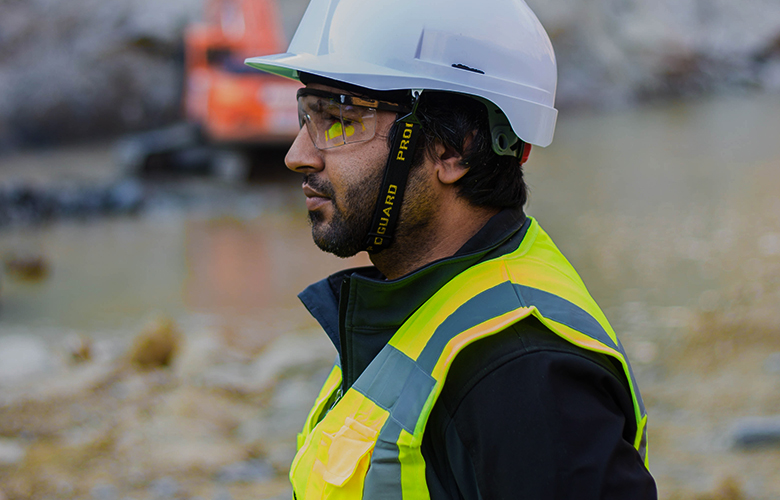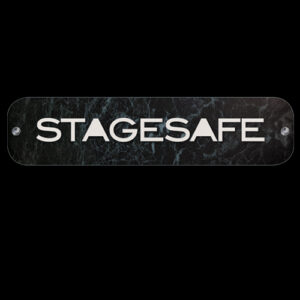
Recently a company was prosecuted for a breach of health and safety regulations following an accident. An accident investigation by the Health and Safety Executive revealed the company in question had a health and safety policy and generic risk assessments but none of these documents had been correctly implemented.
The Judge, in this case, said the documents were good examples of what was required but were in fact quite worthless works of fantasy as neither the policy nor the control measures listed in the risk assessments had been put into practice and therefore did nothing to aid the reduction of risk as the law requires. The fine they received was very substantial indeed because of this.
Don’t forget to include the freelancers within this and that any contractors’ safety documents alone are insufficient.
I get to see this kind of situation on an alarmingly regular basis within the live music and events industry. I get asked to write documents by organisations, companies and artists who do not require any help with implementation or establishing basic health and safety management systems. They do not need help as they have no intention of attempting to be legally compliant, they just want a set of good-looking safety documents complete with corporate logos etc. that can be brought out, dusted off and given to any potential client or venue who may ask for them. Usually this is part of their attempt to secure work and is what many vendors mean when they tell you all their health and safety requirements are complete. This is not what these documents are designed for.
By doing so, you have created a safer and healthier workplace. The purpose of the health and safety policy is to express the employer’s commitment to health and safety. It must include a statement regarding the responsibilities of the employer, supervisors and other workers. A policy states clearly what the employer intends to do about commitment and support for health and safety in the workplace. Most businesses set out their policy in three sections:
These documents are legally required and must be fully implemented to be effective and gain the required result of being part of an effective safety management system.
We find the people who really need to have copies of risk assessments very rarely see them. They are the workers, they need to know what safety control measures are required to make the job as safe as possible before they start work. How can they without the risk assessment to advise them?
All workers are entitled to work in environments where risks to their health and safety are properly controlled. Under health and safety law, the primary responsibility for this is down to employers. An employer’s Health and Safety Policy shows their workers what the company are doing to secure the health and safety of company members, how they are doing it and what the employees are expected to do.
Employers have a duty to consult with their employees, or their representatives, on health and safety matters. Consultation must be either direct or through a safety representative that is either elected by the workforce or appointed by a trade union if one exists.
I never cease to be amazed at the paperwork some companies or organisations produce which is completely contradictory to what is actually happening in the workplace. The employer has not made anyone in their workforce responsible or the employer themselves don’t know how to implement on site. A lack of training of both staff and supervisors is usually and obviously lacking.
The problem goes back to the procurement stage as employers, promoters, event managers and production managers. It is rare to have a procurement system in place to properly assess contractors (including freelancers) for health and safety competence. OK, so they may ask for insurance details and copies of RAMS (Risk Assessments and Method Statements) but seldom is a Policy asked for and once received these documents are just filed away and not properly assessed or even read.
As already mentioned, many companies just have these documents to send out to potential clients, they depend on them not being scrutinised by clients or for any further questions to be asked.
Be very wary about any business that becomes defensive when asked about their safety management systems as full cooperation is required.
Usually, the person (often an office junior or production assistant) requesting these documents will not know why they are required and if asked they will reply with “we have to have them” or “it’s the law”. Wrong answers.
So, from the outset, within the live music and events industry contractors are normally not being managed as the law requires. On an event site or in a venue a “competent person” for health and safety should be appointed to monitor contractors and all aspects of safety, this includes touring productions.
There is also a legal requirement under Regulation 7 of the Management of Health and Safety at Work Regulations 1999 for companies (employers) to appoint “competent persons” to advise them on health and safety. It amazes me how this is often overlooked. Case history has rejected a person holding a NEBOSH General Certificate as a “Competent Safety Advisor” in favour of a higher level qualification so be warned when selecting your “competent” safety advisor.
By law, staff must have, training, instruction, information and supervision. History still shows contractors and crew are still often selected because they are known to the Tour or Production Manager and not because they are health and safety competent and have been assessed or can prove their safety competence. Training is important and effective, as it will educate your employees on proper workplace procedures, practices, and behaviour to prevent possible injuries and illness.
Failing to comply with these or other health safety regulations can invalidate any insurance you may hold making health and safety management one of the best insurance packages you can invest in when used correctly.
Perhaps one of the hardest roles we have as safety advisors in the live music industry is trying to persuade employers/clients of the benefits of health and safety. There are several reasons for this. A great many still view the production industry as like running away to join the circus, not a “proper job”, and the fact the industry is in fact made up of many varied industries of small businesses with only a few employees and freelancers making up the majority of the workforce. But regardless, it is a fact that a safe and healthy workplace not only protects workers from injury and illness, it can also lower injury/illness costs, reduce absenteeism and staff turnover, increase productivity and quality, and raise employee morale. As well as saving your hard-earned reputation, potential legal costs and fines, costs for loss or damage to equipment etc. In other words, safety is good for business, and if you think safety is expensive, try having an accident! A simple cost/benefit analysis will show incredibly positive results.
Do you recognise any of these bad traits in your business or organisation? It’s time to act now and change.
How to Get on Top of Those Loose Threads
Grasping for Social Media Content?


With the benefit of over 35 years' experience, STAGESAFE offers a full range of award-winning and fully professional health and safety services. Our services are for event organisers, production and tour managers, promoters, freelancers, service companies and businesses at every level within the live music, event and entertainment industries. STAGESAFE is the trading name for Chris Hannam. We are not lawmakers or the fun police – we simply offer totally independent professional health and safety advice and services to help you run your event or business in a safe and legal manner. Just the mention of the words "health and safety" often conjures up negative images of over-zealous ‘jobsworth's', getting in the way of business, and creating unnecessary costs. It is easy to see why this is the case, with the press often reporting inaccurate stories about activities being banned on “health and safety” grounds, or with the words ‘health and safety' often being used as a poor excuse when people don't want something to happen. We do not provide Production or Event Management services as this would be a major conflict of interest to our health and safety management services, for tours and events. Health and safety advisors must be impartial and should have no other role or function outside of their health and safety duties and must have time to carry out these duties even in an emergency. We have a whole team of specialists to call on when required such as rigging, noise and pyro specialists, we also believe in a practical and pragmatic approach with everything delivered to you simply in bite-sized chunks, to enable easy implementation without any jargon so even the least experienced event organisers have nothing to fear or misunderstand. No more confusion, we make it simple for you.
Read Full Profile© 2021 TheatreArtLife. All rights reserved.

Thank you so much for reading, but you have now reached your free article limit for this month.
Our contributors are currently writing more articles for you to enjoy.
To keep reading, all you have to do is become a subscriber and then you can read unlimited articles anytime.
Your investment will help us continue to ignite connections across the globe in live entertainment and build this community for industry professionals.